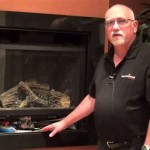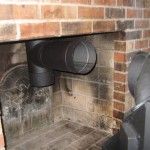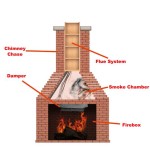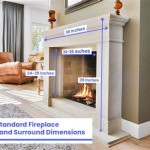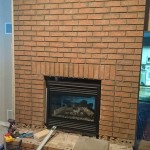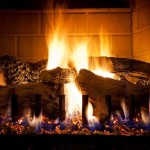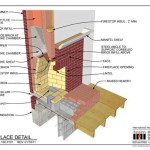Heater Inserts For Fireplaces: Transforming Existing Fireplaces into Efficient Heat Sources
Fireplaces, traditionally a focal point of a home, often evoke feelings of warmth and comfort. However, conventional open fireplaces are notoriously inefficient heating sources. A significant portion of the heat generated escapes up the chimney, resulting in minimal warming of the surrounding room and increased energy consumption. Heater inserts for fireplaces offer a practical solution to this inefficiency, transforming existing fireplaces into effective and controllable heating appliances.
A heater insert is essentially a closed combustion chamber designed to fit inside an existing fireplace opening. These inserts are available in various fuel types, including wood, gas, and electric, and are designed to drastically improve the heating efficiency of a fireplace. Unlike open fireplaces that radiate heat primarily in a single direction, inserts utilize blowers to circulate warm air throughout the room, providing a more consistent and even distribution of heat. Furthermore, the enclosed combustion system minimizes the escape of heat up the chimney, capturing a larger percentage of the energy produced and directing it into the living space.
The installation of a heater insert typically involves connecting it to a dedicated flue liner that extends up the chimney. This liner ensures proper venting of combustion byproducts, preventing them from entering the home and maximizing the insert's efficiency. Professional installation is usually recommended to ensure the insert is correctly sized for the fireplace opening and that the flue liner is properly connected.
Understanding the Different Types of Heater Inserts
Choosing the right heater insert for a fireplace depends on several factors, including the desired fuel type, the size of the area to be heated, and aesthetic preferences. Each fuel type offers distinct advantages and disadvantages, which warrant careful consideration.
Wood-Burning Inserts: Wood-burning inserts are popular for their aesthetic appeal and the authentic ambiance they provide. These inserts burn wood efficiently, producing substantial heat while minimizing smoke emissions, particularly in models that comply with Environmental Protection Agency (EPA) standards. EPA-certified wood-burning inserts are designed to burn wood more completely, reducing particulate emissions and improving overall efficiency. However, wood-burning inserts require a readily available supply of firewood and regular maintenance, including ash removal and chimney sweeping. The heat output of a wood-burning insert is dependent on the type and amount of wood burned, requiring manual adjustment to regulate the temperature.
Gas Inserts: Gas inserts offer convenience and ease of use compared to wood-burning models. They are available in both natural gas and propane versions, allowing homeowners to choose based on the available fuel source. Gas inserts typically feature thermostatic controls, enabling precise temperature regulation and automated operation. They can be easily turned on and off with a switch or remote control, providing instant heat without the need for tending a fire. While gas inserts offer convenience, they rely on a gas supply, which can be subject to price fluctuations. Additionally, gas inserts may not replicate the same rustic charm as wood-burning models.
Electric Inserts: Electric inserts are the most convenient and easiest to install option. They require no venting or fuel supply, making them suitable for homes without existing chimneys or gas lines. Electric inserts operate by heating coils that warm the air, which is then circulated by a fan. They offer adjustable heat settings and often feature realistic flame effects, creating a visual ambiance without the need for actual combustion. Electric inserts are relatively inexpensive to purchase and install, but their heating capacity may be limited compared to wood or gas models. Furthermore, operating an electric insert can increase electricity consumption, potentially leading to higher utility bills.
Factors to Consider When Selecting a Heater Insert
Choosing the appropriate heater insert requires careful assessment of several key factors to ensure optimal performance and satisfaction. These factors include the size of the fireplace opening, the heating requirements of the space, and the desired aesthetic appeal.
Fireplace Opening Dimensions: The dimensions of the existing fireplace opening are crucial for determining the appropriate size of the insert. The insert must fit snugly within the opening to ensure proper sealing and prevent heat loss. Measuring the height, width, and depth of the fireplace opening is essential before selecting an insert. Some inserts are designed to fit snugly in the opening, while others may require a surround panel to fill any gaps.
Heating Capacity: The heating capacity of an insert is measured in British Thermal Units (BTUs), which indicates the amount of heat the insert can produce per hour. The required BTU output depends on the size of the area to be heated, the insulation levels of the home, and the climate. A larger space or a poorly insulated home will require an insert with a higher BTU rating. Consulting with a heating professional can help determine the appropriate BTU output for specific heating needs.
Efficiency Ratings: The efficiency rating of a heater insert indicates the percentage of fuel energy that is converted into usable heat. Higher efficiency ratings translate to lower fuel consumption and reduced heating costs. Wood-burning inserts with EPA certification typically have higher efficiency ratings than non-certified models. Gas and electric inserts also have efficiency ratings that can be compared to assess their performance.
Aesthetic Preferences: Heater inserts are available in a wide range of styles and finishes to complement different interior design aesthetics. Wood-burning inserts often feature cast iron or steel construction with decorative details, while gas and electric inserts may offer a more contemporary look with sleek lines and realistic flame effects. Choosing an insert that matches the overall style of the room can enhance the visual appeal of the fireplace.
Advantages of Installing a Heater Insert
The benefits of installing a heater insert extend beyond improved heating efficiency. Heater inserts offer numerous advantages, including reduced energy costs, enhanced safety, and increased home value.
Improved Heating Efficiency: As previously mentioned, heater inserts convert a significantly higher percentage of fuel energy into usable heat compared to open fireplaces. This improved efficiency translates to lower heating costs and reduced energy consumption. Homeowners can save money on their heating bills by relying on a heater insert as a primary or supplementary heating source.
Enhanced Safety: Open fireplaces pose several safety hazards, including the risk of sparks and embers escaping into the room, creating a fire hazard. Heater inserts feature enclosed combustion chambers, minimizing the risk of sparks and embers escaping. Furthermore, the dedicated flue liner ensures proper venting of combustion byproducts, reducing the risk of carbon monoxide poisoning. Many heater inserts also include safety features such as overheat protection and automatic shut-off mechanisms.
Increased Home Value: Installing a heater insert can increase the value of a home by improving its energy efficiency and aesthetic appeal. A well-maintained fireplace with a functional and efficient heater insert can be a significant selling point for potential buyers. Furthermore, a high-efficiency heater insert can qualify for energy efficiency rebates or tax credits, further enhancing the home's value.
Reduced Air Pollution: EPA-certified wood-burning inserts are designed to burn wood more completely, reducing particulate emissions and improving air quality. Gas inserts also produce lower emissions compared to open fireplaces. By reducing air pollution, heater inserts contribute to a healthier indoor and outdoor environment.
Heater inserts offer a compelling solution for homeowners seeking to improve the heating efficiency and safety of their fireplaces. By carefully considering the different types of inserts, factors to consider when selecting an insert, and the advantages of installation, homeowners can make an informed decision and transform their fireplaces into valuable and efficient heating appliances. Proper installation and maintenance are essential for ensuring optimal performance and longevity of the heater insert.

Gas Fireplace Inserts Fireplacesdirect Com

Lopi Premium Wood Fireplace Inserts Custom Hearth Fireplaces And Stoves

A Step By Guide To Understanding Fireplace Inserts

Fireplace Inserts 5 Money Saving Benefits Efficient Heating

10 Best Electric Fireplace Inserts Of 2024 Tested And Reviewed

What Is A Fireplace Insert Woodlanddirect Com

Modern Flames Redstone 30 Inch Built In Electric Fireplace Insert Firebox Heater Rs 3021 Fireplaces Depot

Best Fireplace Inserts Of December 2024 Forbes Home
How To Install Gas Fireplace Insert Heat Glo

Gas Fireplaces Inserts Stoves And Heaters The Hearth
Related Posts

